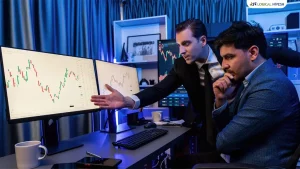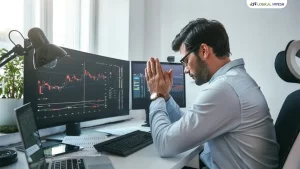Those who’ve been around the stock market know that it is quite a complex ecosystem where fluctuations occur and are based on a range of factors. Among these, we’ve got news and events that can cause immediate substantial impacts on stock prices. Understanding how to navigate these market catalysts with Logical Nivesh can help you optimize your portfolios and mitigate risks.
The Nature of Market Catalysts
Market catalysts can be broadly categorized into economic, political, and corporate events.
- Economic catalysts include changes in interest rates, inflation data, employment reports, and GDP growth figures.
- Political events encompass elections, policy announcements, geopolitical tensions, and regulatory changes.
- Corporate events, on the other hand, involve earnings reports, mergers and acquisitions, product launches, and executive changes.
Each of these events comes with different weights and implications for the market. For instance, a bank’s decision to change interest rates can influence borrowing costs and consumer spending, affecting the broader economy and stock prices. Similar to that, a major geopolitical event can create uncertainty, leading to volatility as investors reassess risks and adjust their strategies.
The Psychological Aspect: Investor Sentiment
News and events impact not only the fundamental aspects of companies but also the investors’ sentiments. Apparently, human psychology plays a crucial role in the stock market, where fear and greed drive decision-making.
Positive news like favorable economic data, can lead to exhilaration, shooting up stock prices. Conversely, negative news, like economic downturns, can incite fear, leading to sell-offs and declining prices.
Whether you believe it or not the phenomenon of market overreaction is common where the initial response to news can be exaggerated, causing significant price swings. Clever investors often capitalize on these overreactions by using strategies like contrarian investing, where they buy undervalued stocks during panic selling.
According to SEBI – Certified Research Analyst, Ashutosh Bhardwaj, the phenomenon of market overreaction is common, where the initial response to news can be exaggerated, causing significant price swings. Savvy investors often capitalize on these overreactions by employing strategies such as contrarian investing, where they buy undervalued stocks during panic selling or sell overvalued stocks during irrational exhilaration.
Short-term vs. Long-term Impacts
The impact of news and events on stock prices can vary in duration. Some events cause short-term volatility, where prices spike but stabilize as the market digests the information. For instance, a company’s quarterly earnings report might cause a brief surge or drop in its stock price, but the long-term trajectory depends on broader fundamentals.
Contrary to that, some events have long-term implications. Regulatory changes, technological breakthroughs, or significant mergers can alter a company’s landscape, influencing stock prices over a prolonged period. Investors must distinguish between noise and signals, to focus on events that genuinely alter the fundamental value of their investments.
Strategies for Navigating Market Catalysts
Navigating the impact of news and events requires investors to employ a combination of strategies, analytical skills, and last but certainly not least, a calm demeanor. Here are some key approaches that an investor must follow:
- Stay Informed but Discriminating: Staying updated with the news is crucial, but remember not all news requires action. It is highly recommended that you develop the ability to differentiate between impactful news and mere noise. Following Logical Nivesh can be a great way to start things off.
- Diversification: You may not realize but a diversified portfolio can help you mitigate risks that are associated with unexpected events. By spreading your investments across different sectors, geographics, and asset classes, investors can cushion the impact of adverse news affecting a particular segment.
- Fundamental Analysis: When it comes to understanding the “structural” value of stocks, you can’t really go wrong with fundamental analysis. You see, by focusing on financial statements, growth prospects, and industry conditions, you can make well-informed decisions, less swayed by short-term news.
- Technical Analysis: Technical analysis is the best tactic you can possibly use to identify patterns and trends. Charting tools and historical data provide insights into the market behavior, aiding in the timing of the trades.
- Risk Management: Using risk management strategies such as stop-loss orders and position sizing helps protect you against significant losses. You should have a clear exit strategy in place that is based on predefined criteria rather than emotional responses to news.
- Long-term Perspective: here’s a pro tip; you’ve got to maintain a long-term perspective. While news can cause short-term fluctuations, the overall trend of fundamentally strong companies tends to align with their intrinsic value over time. The bottom line is, patience and discipline are vital for investors.
Conclusion
The impact of news and events on stock prices underscores the importance of staying informed, analyzing data critically, and maintaining a balanced approach to investing. By understanding market catalysts with SEBI-Registered Research Analyst – Ashutosh Bhardwaj and employing strategic measures, investors can navigate the complexities of the stock market, turning potential challenges into opportunities. In an ever-evolving landscape, the ability to adapt and respond thoughtfully to news and events remains a cornerstone of successful investing.







